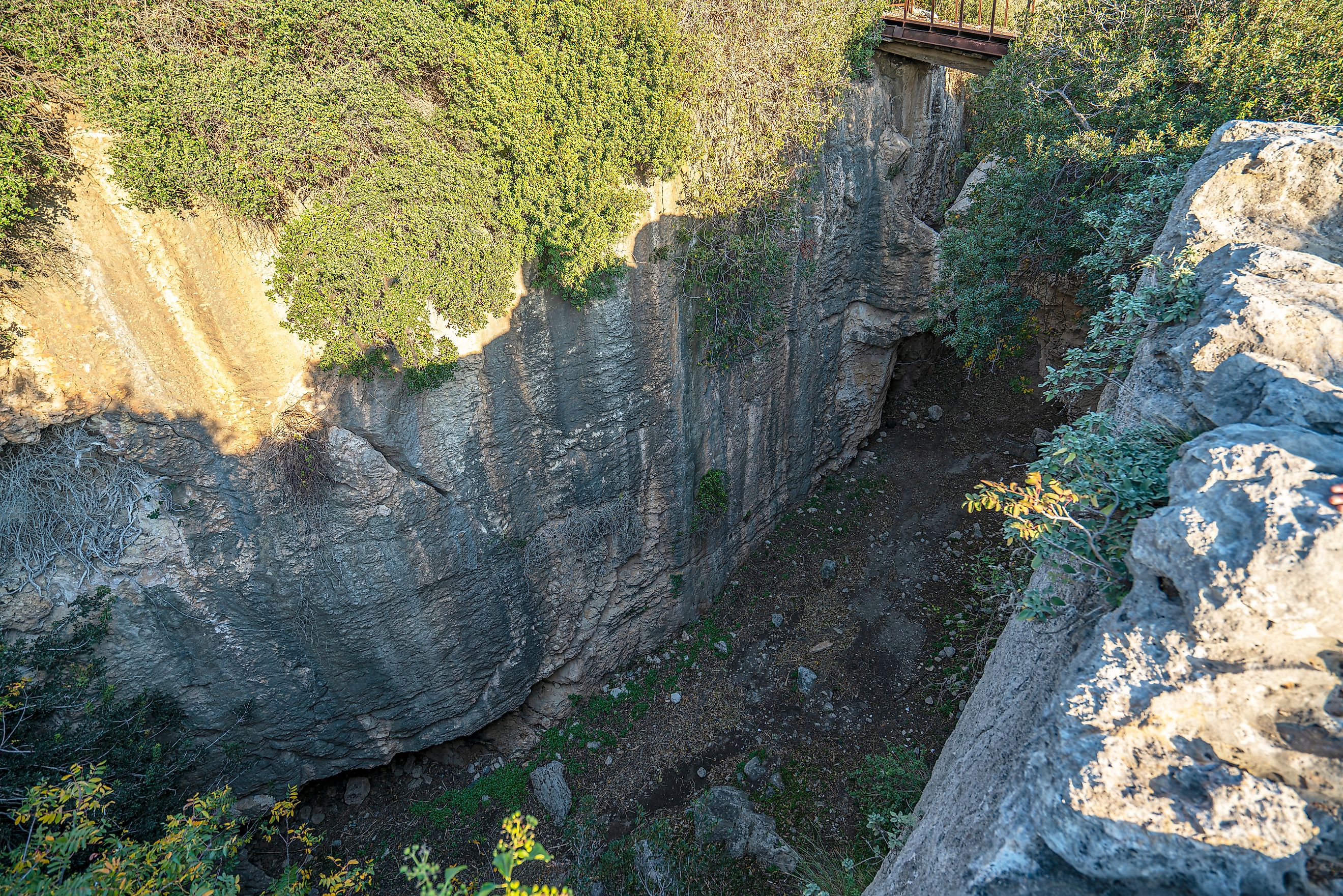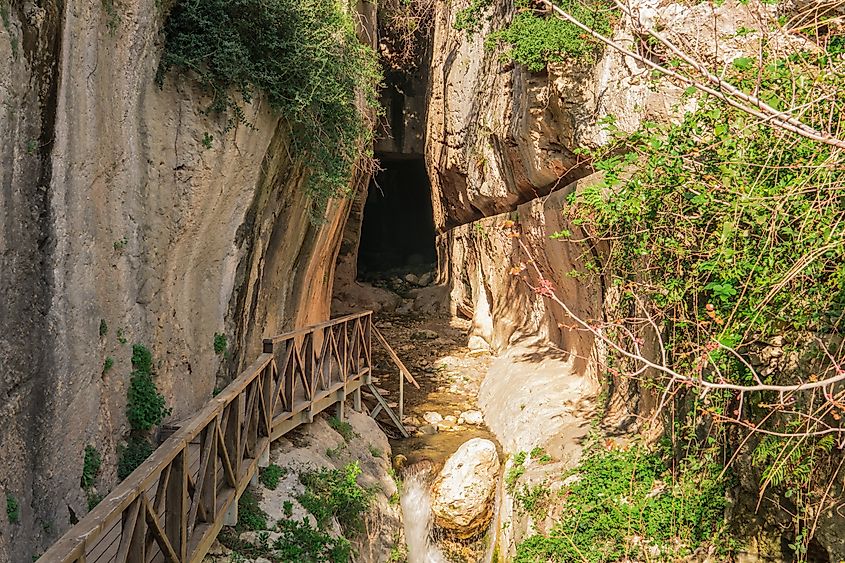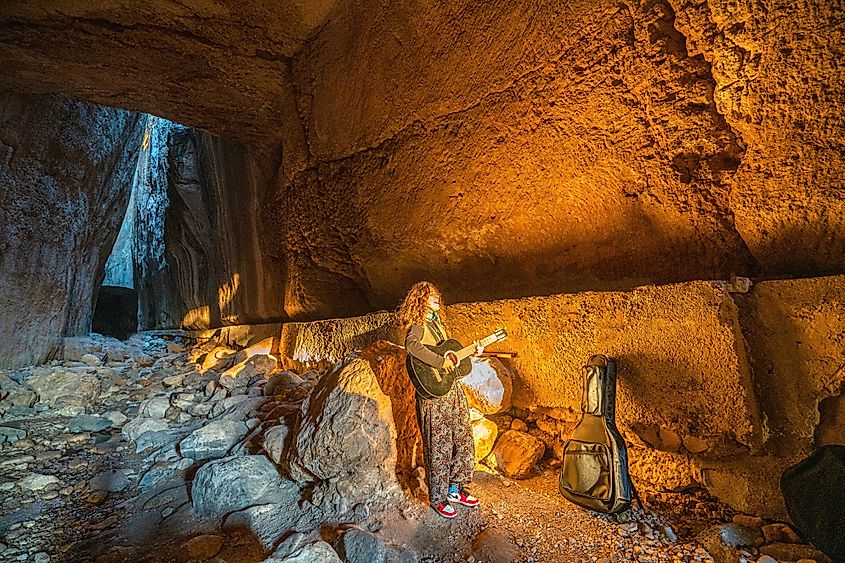
The Remarkable Story of the Roman Titus Tunnel in Turkey
The Roman Titus Tunnel, located near the ancient city of Seleucia Pieria in modern-day Samandağ-Cevlik, Turkey, is a significant engineering feat from the Roman period. Built nearly 2,000 years ago, this tunnel was designed to prevent floodwaters from inundating the city’s harbor. Today, the Titus Tunnel continues to be a key example of Roman innovation in addressing environmental challenges.
Purpose and Design

Seleucia Pieria was an essential port city in the Roman Empire—a gateway for goods from the East to reach Rome. However, due to its proximity to the Orontes River and surrounding mountains, the city was plagued by constant flooding. Floodwaters carried silt and debris into the harbor, threatening to render it inoperative. Prior attempts to control these floods through the construction of canals had failed.
To address this ongoing problem, Emperor Vespasian ordered the construction of the Titus Tunnel in the second half of the 1st century AD. The tunnel was designed to divert the floodwaters away from the harbor, ensuring that it remained functional. The engineers of the Tenth Legion Fratensis were responsible for designing the tunnel, which was built by Roman legionaries, sailors, and prisoners, including Jewish slaves captured during the Jewish-Roman War (66-73 AD).
Construction

While construction of the Titus Tunnel began under Emperor Vespasian, it continued during the reign of his son, Titus. However, the tunnel was not completed until the reign of Emperor Antoninus Pius in the 2nd century AD. This timeline is confirmed by several rock-carved inscriptions found within the tunnel. At the entrance to the first section, an inscription bears the names of Vespasian and Titus, stating that they "caused it to be made." Further downstream, another inscription marks the completion of the tunnel under Antoninus Pius.
The tunnel spans a distance of approximately 1.4 kilometers (0.86 miles) and was carved entirely through solid rock. The engineering challenge of constructing such a tunnel with the tools available at the time underscores the advanced capabilities of Roman engineers. It is believed that workers used basic iron tools such as chisels, hammers, and picks to chip away at the rock, inch by inch. The process required not only physical labor but also careful planning to ensure the tunnel's alignment and gradient were correct.
To achieve this, Roman engineers employed a method involving the creation of vertical shafts along the tunnel's route. These shafts, dug from the surface down to the level of the tunnel, allowed workers to excavate horizontally in both directions, connecting the shafts as they went. The vertical shafts also provided ventilation, light, and a means to remove the excavated rock.
Legacy and Preservation

Unlike many other Roman structures that were built for public display or to demonstrate imperial power, the Titus Tunnel was a functional infrastructure project aimed at solving a critical issue—protecting the harbor of Seleucia Pieria from the destructive effects of flooding. Its successful completion as one of the world's largest man-made tunnels ensured the continued operation of the port, which was vital for trade and military movements in the region.
However, the legacy of the Titus Tunnel extends beyond its immediate function. It exemplifies the Roman Empire’s broader approach to infrastructure—building not just for the present, but with an eye toward long-term utility and resilience.
The Titus Tunnel is now celebrated as an important cultural and historical site. Its preservation allows us to appreciate the ingenuity and foresight of Roman engineers, who were capable of designing systems that could withstand the test of time. The tunnel also provides insight into the Roman understanding of environmental engineering, demonstrating their ability to manipulate natural landscapes to serve human needs.
Final Thoughts

The significance of the Titus Tunnel lies not only in its architectural and engineering achievements but also in what it represents: the Roman commitment to solving real-world problems with innovative, durable solutions. The tunnel's continued existence reminds us of the empire’s lasting impact on infrastructure development and serves as a symbol of how ancient engineering continues to inform and inspire modern practices.











